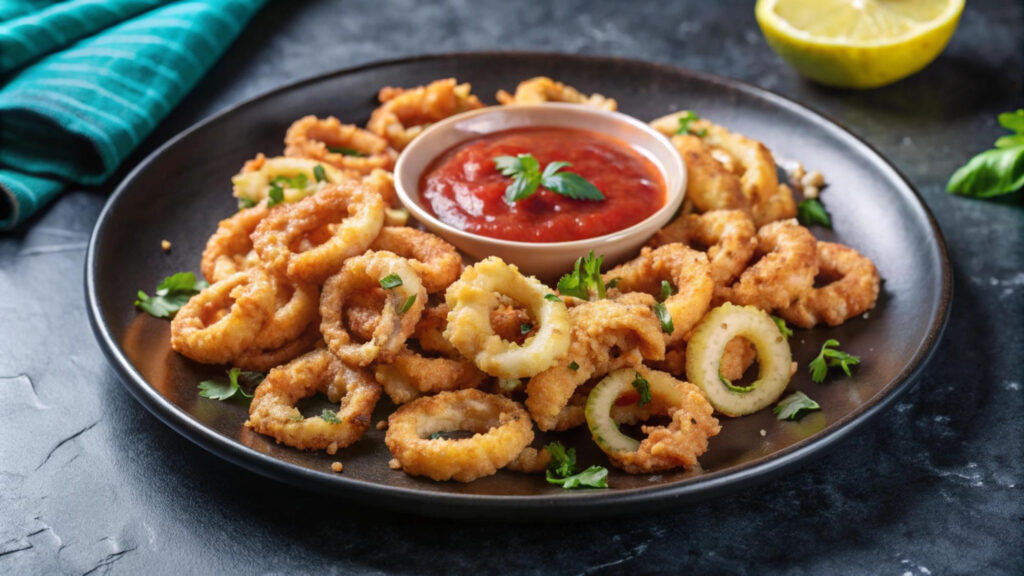The word calamariere has drawn attention for its unique sound and layered meaning. While not widely known, it carries a certain charm that connects to history, language, and culture. Understanding calamariere is not just about knowing what the word means but also about exploring where it comes from, how it has been used, and why it still matters today.
Understanding the Term Calamariere
The first step to grasping calamariere is looking at its origins and the background of the word. Linguists often suggest that the root of calamariere may connect with words related to writing instruments, organization, or even seafood references in certain Romance languages. While its exact origin may remain debated, the word has been used in cultural and linguistic contexts to describe order, service, or symbolic meaning.
In general language, calamariere is used to express a role, an object, or an idea tied to structure and responsibility. Some communities use it as a descriptive word, while others see it as part of a more symbolic vocabulary. The versatility of calamariere is what makes it intriguing.
Historical Significance of Calamariere
Looking back, calamariere has carried meaning in early literature and speech. Mentions of the word are sometimes linked with Italian and French roots, where variations of the word suggested either a tool, a profession, or a symbolic reference. It was often tied to systems of service, written culture, or organization.
Over time, the meaning of calamariere has shifted. In some texts, it described a physical object or role, while in others it carried metaphorical weight. This fluidity of meaning shows that calamariere is not locked into one definition but has evolved as languages and cultures have changed. The historical journey of calamariere reflects how words can take on new life depending on context.
Calamariere in Modern Context
In today’s world, calamariere has not disappeared. Instead, it appears in modern conversations, sometimes as a direct reference, other times as a symbolic term. People use it in industries connected to organization, hospitality, or communication. In these areas, calamariere is understood as representing order, service, or even creativity.
Everyday language also keeps calamariere alive. Though it may not be common in all regions, those who use it often tie it to cultural identity, professional roles, or symbolic meaning. In this way, calamariere continues to hold relevance in modern life.
Cultural and Regional Connections to Calamariere
The recognition of calamariere depends heavily on culture and region. In Italian contexts, the word carries echoes of traditional roles and objects, while in French, its sound and form give it symbolic appeal. Certain Mediterranean regions recognize calamariere more clearly, often linking it to food culture, organization, or social order.
Regional interpretations vary. For some, calamariere is almost a literal object, while for others it takes on a broader symbolic form. The cultural variety adds richness to its meaning and shows how one word can adapt across borders.
Symbolism and Meaning Behind Calamariere
Beyond practical use, calamariere carries symbolic meaning. It is often associated with order, clarity, and communication. In some interpretations, it reflects balance and structure, representing roles that bring organization to daily life.
The figurative interpretations of calamariere make it more than just a term. Writers and speakers have used it to describe responsibility, creativity, or cultural identity. This symbolic depth makes calamariere resonate in ways that go beyond language, touching on how people understand roles, order, and meaning.
Practical Applications of Calamariere
Though the word sounds abstract, calamariere has practical applications. In historical settings, it was used to describe objects or professions tied to organization or communication. In modern life, it is sometimes applied in fields like hospitality, culture, and even education, where order and responsibility play central roles.
Calamariere is also relevant in creative fields. Writers and artists may use the word symbolically to represent balance or clarity. In professional life, it is used as a marker of reliability and structure. This practical side of calamariere ensures that the word is not only symbolic but also useful.
Challenges and Misunderstandings About Calamariere
Like many words with layered history, calamariere is sometimes misunderstood. People may confuse it with similar-sounding words, especially those linked to food like calamari, even though the meanings are different. Others may assume it has only one cultural or regional root, when in reality its connections are broader.
To avoid these misunderstandings, it helps to see calamariere as a flexible word with multiple layers of meaning. Its value comes from this diversity, not from a single fixed definition. Clarity about its use allows for deeper appreciation.
Conclusion
The journey of calamariere shows how a single word can carry history, symbolism, and cultural depth. From its debated origins to its role in modern language and industries, calamariere represents more than a definition — it reflects order, creativity, and identity. Understanding calamariere is about more than words; it is about seeing how language evolves and continues to shape meaning in everyday life.
FAQs
1. What does calamariere mean?
Calamariere refers to a word with cultural, historical, and symbolic roots. It is often linked with order, service, or communication depending on context.
2. Where does the word calamariere come from?
Its origins are believed to connect with Romance languages such as Italian and French, though the exact source varies across history.
3. Is calamariere used in specific cultures or regions?
Yes. Mediterranean cultures recognize it more clearly, while other regions may use it in symbolic or modern professional contexts.
4. How is calamariere different from similar terms?
Calamariere is distinct from words like calamari, which refers to food. Its meaning is broader, carrying symbolic and cultural weight.




